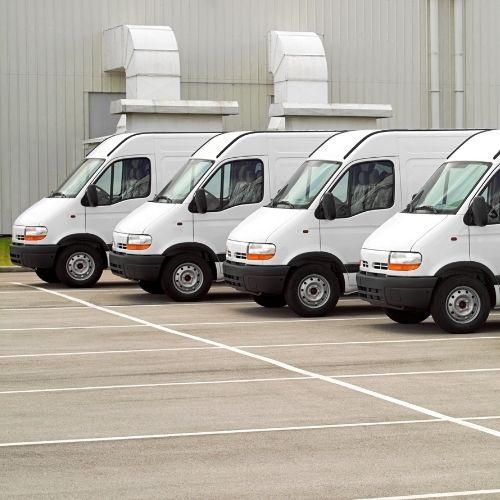
Equipment management software allows you to keep better track of your assets. The best thing about equipment tracking software is that it is customisable and malleable to your specific use case.
This means that you can use equipment tracking means for IT asset management, fixed asset tracking, and more. So, why should this not apply to vehicles? The answer is simple: you can use equipment and asset management software to track and manage your fleet of vehicles.
There are some ways that this overlaps with fixed asset management, and some specific things that you can use to better track your vehicles, so, we’ll go into them below.
Fixed Asset Management Operations
The core of fixed asset management is the idea that every asset is unique and has unique data and information. For example, each of your laptops are distinct from each other – they may have cost the same and depreciate at the same rate, but every scratch and every login makes a laptop unique.
Therefore, there are a few features used in fixed asset management that you can apply to your vehicles. Vehicles are no different from fixed assets in the sense that they’re unique and have unique information attached to them.
Where you’d log a laptop’s invoice number, you may log a vehicles license plate. If you’re in the UK using UK asset management software, instead of your repeating reminders being PAT tests, they will be MOTs and so on and so forth.
This shows the significant overlap between equipment management and vehicle tracking as well as the customisability that is at the core of asset tracking. There are features built to help your records and operations and these can be used on vehicles or on your IT assets.
Equipment Management Software And Vehicle Tracking
There are a few distinct ways you may want to track your vehicles. For example, you can still use QR code asset management by sticking a QR code to your vehicle’s dashboard.
The main benefit of using a QR code asset tag here isn’t for location tracking, however, it will be solely for asset discovery. In other words, if you scan an asset’s tag using your equipment management app, the corresponding asset’s profile will open, ready for you to add issues or information.
You can also use RFID tracking, to an extent. If your parking garages are fit for fixed readers, you’ll be able to track when your fleet enters or leaves a location. There are specific challenges that need to be overcome with this, however, such as the fact that a lot of the RFID asset tracking will need to happen outside in a low power, low WiFi environment.
If you want to track your vehicles’ locations, GPS asset tracking and GPS tags will be a lot more viable.
GPS Asset Tracking & GPS Tags
GPS asset tags work best in vehicles as you can plug them into your vehicle’s cigarette lighter, for example, which means that they remain charged.
Uniquely, the challenges and limitations GPS tags have don’t apply to vehicles as vehicles can power GPS trackers. GPS trackers work by periodically pinging a GPS location to your asset tracking software.
Battery life is a critical balance with tracking capabilities as, if a GPS tracker pings more frequently, the battery drains faster. Therefore, GPS tags work best in vehicles as they can be plugged in and, therefore, track your vehicles’ locations in real-time.
itemit’s Equipment Management Software
You can use itemit’s equipment management software to track a wide range of assets, all in one place. The benefits of highly customisable features include the fact that you can track vehicles in tandem with your fixed assets and either keep them separate or together in your reports.
Also, unique to itemit, you can mix and match a range of tracking technologies. This means that you can use GPS trackers for your fleet and QR code asset tags for your tools and equipment tracking.
This customisability and ability to tailor itemit to your needs makes it the best asset tracking software on the market. Our support reaches around the world, too, meaning if you need a hand in setting up, we’ll be more than happy to help.
To find out more about how itemit can help you track your assets, you can contact the team at team@itemit.com. You can also fill in the form below to start your 14-day free trial.

Try itemit
Choose a better way to track your assets. Start your free 14-day trial now!

Keep Learning
itemit Blog
Tips, guides, industry best practices, and news.
What Are The Four Phases Of The Equipment Life Cycle?
There are four phases of an equipment life cycle, but it’s not clear what they are or why equipment tracking can improve the life cycle. Read this article to find out!
Implementing An Effective Equipment Replacement Plan
Need to replace equipment after using pre-emptive maintenance? implementing an equipment replacement plan helps. Read this article to find out how to make a plan!
Make The Switch To Equipment Tracking Software
Know where your assets are all of the time by using equipment tracking software. Read this article now to discover additional benefits!



